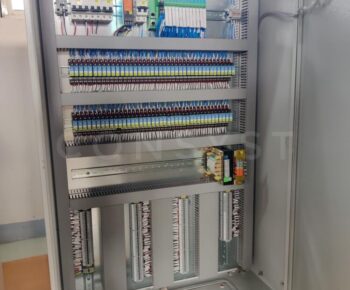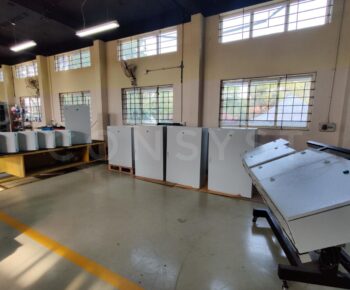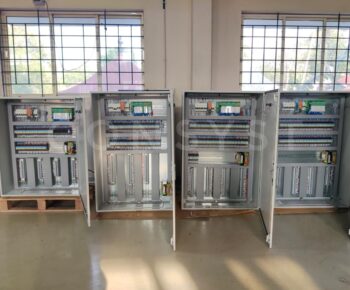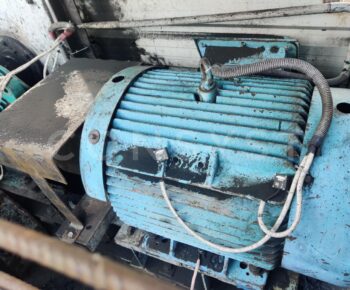Project Name: Implementation of a Smart Plant Monitoring and Control System for a Coal Handling Plant: Featuring Condition Monitoring for Rotating Equipment
Scope: Detailed Design and Engineering, Supply, Installation and Commissioning of a Redundant PLC Based Control System including SCADA, Fields Instruments (Level) and a Condition Monitoring System for Rotating Equipment
Background:
The Customer is a leading coal mining company in India operating 40+ mines, 25+ opencast and 25+ underground facilities. The scope of this project was at an open cast Coal Handling Plant wherein the customer aimed to introduce a completely automated system for handling coal along a 0.7-kilometer conveyor system. The requirement was to remotely monitor and control complete plant operations, incorporating a fault identification system from the time the coal was received at the pit to its dispatch at coal wagons.
The plant process at site involved the transportation and unloading of Run-Off-Mine (ROM) coal or impure coal to four receiving hoppers through lorries. The hoppers, equipped with 400 TPH reciprocating feeders, would reclaim the coal and feed it onto conveyor. The conveyor would collect crushed coal (-) 200 mm in size and discharge it onto a tripper trolley conveyor. From here and with the help of the tripper trolley, coal would be equally spread across a ground bunker having a capacity of 5,000+ tonnes.
The Bunker, equipped with plough feeders and a slit-type opening, effortlessly transfers the load to the reclaiming conveyor below. The coal is then smoothly unloaded from onto the dispatch conveyor via a chute and precisely measured in a pre-weigh bin before being neatly loaded into railway wagons.
System Description:
A real-time automated and centralized control system, allowing the start/stop of all equipment from a central control station was established. This included continuous monitoring of all equipment such as reciprocating feeders, conveyors, plough feeders, magnetic separators, sump pumps, exhaust fans, tripper conveyor, main transformers, circuit breakers, etc.,
Condition monitoring is a critical aspect of plant operation that ensures the safe and efficient functioning of all equipment. To maintain optimal performance, all the 80 numbers off plummer blocks, conveyor drums, gearboxes, and motors of drive heads were closely monitored to ensure that set levels of temperature, sound, smoke, and vibration for drive heads were met.
Emergency control situations were accounted for by seeing that every equipment could be stopped from the control station near the respective drive through pull cord switches, belt sway switches, zero speed switched and chute overflow sensors. In case of maintenance and testing, provision to carry out repair services of the desired equipment from local control stations was enabled.
Continuous monitoring through visual display units were provided to ensure that the control room operator was able to see equipment status, alarms and detected faults.
Our Approach:
Each of the four conveyor start-stations represented a substation. Previously, if any fault / trip occurred at a substation, an operator would have to manually walk through, to check where the fault had occurred.
Manpower requirement was also high for the operation of the conveyors, considering various shifts.
The conveyors were equipped with over 60 safety switches or pull-cords at various locations for maintenance and emergency purposes. Now, operators would occasionally pull these switches and fail to return them to their original position, causing the conveyor to become inactive. To determine which safety switch was activated, the operator would need to inspect each pull cord individually to check which one was triggered.
Our approach was to place 4 Remote IO (RIO) panels at each of the substations. This way, all trip related information was captured for necessary action. A Beltwatch system throughout the conveyor was employed to identify any pullcord engagement. A Phoenix Contact VISU+ SCADA in the Central Control Unit was deployed to visualize every equipment information. Other visuals included fire alerts through installed smoke detectors and tripper trolley location over ground bunker and coal level status in bunker through installed level switches.
Smart Vibration + Temperature sensors from Banner Engineering was used to monitor vibration and temperature conditions of conveyor drums, motors, and gear boxes in real time to help identify any mechanical fluctuations.
A redundant Phoenix Contact AXC series PLC system was offered to facilitate remote monitoring and sequential control. All the electro-mechanical equipment at the Over Ground Bunker and Hopper loading complex was controlled through the PLC. Automation and control of the plough feeders to disembark coal onto the reclaim conveyor was ensured to see that the feeders stopped as soon as the coal level reached set high level point and started to load as it reached a low-level point. Level sensors across conveyor chutes were installed to detect any discharge jam. Camera for real time viewing of the conveyor system was also enabled.
Result:
- Complete Automation, Control and Remote Monitoring of the Coal Handling Plant was obtained making it easier for the officials to carry out plant operations effectively and efficiently.
- Incorporating the appropriate control has helped lower manual manpower activities.
- Condition monitoring of conveyor drums, motors, and drives in real time has enabled proactive fault identifications and timely remediations.





